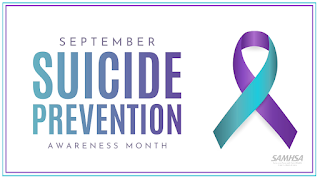Social-Emotional Learning (SEL) in the Classroom
May is Mental Health Awareness Month. According to the National Alliance on Mental Health (NAMI), 1 in 6 U.S. youth aged 6-17 experience a mental health disorder each year. Since so many youth are impacted, teachers often provide not only educational instruction, but also skills in social-emotional learning. During this time of quarantine, our parents have taken on the role of teachers, so we have invited one of our very own teachers to explain how to support the social and emotional needs in the classroom. Thanks to Emily Fedel of Brunson Elementary for this helpful information.
Teaching at Brunson Elementary School challenged me to think more broadly about helping kids learn social emotional skills, and taught me to incorporate them into daily lessons. When I taught third grade in a general education classroom, we identified one or two habits of character that kids would need to practice for an assignment and incorporated them into our daily learning targets. For instance, if they were working on a research essay, they needed to practice both craftsmanship and perseverance. Then, when we explained the directions for the assignment, we discussed those habits of character and how to practice them throughout the assignment. As they worked on it, we gave feedback to students on their academic progress as well as their progress in practicing those habits of character. This allowed students to dive into the meaning of the habits of character and apply them to real life situations.
How we, as teachers, respond to our students who are experiencing strong emotions contributes to the culture of the classroom and school, but also impacts students who may be dealing with mental health illness. Training myself to respond thoughtfully and with a growth mindset to discipline situations or other daily crises helped students to feel safe and loved when they experience big emotions. At Brunson, we have a recovery space in every classroom. Students can elect to visit that space in the classroom if they are working through big emotions. These recovery spaces are differentiated to each grade level and include many tools like optional reflection sheets, calming bottles, posters of emotions, and fidgets or other small objects that help students to practice mindfulness. The purpose of recovery is for students to process through emotions they are experiencing and then return to the academic task at hand. They always have the option to talk with a teacher or other adult later to solve the problem.
Social emotional learning is very easy to incorporate into teaching throughout the day if the teacher has the right mindset. At Brunson, we believe that students need to be taught social emotional skills in order to be successful students and future citizens so we set aside 40 minutes two times per week for CREW. CREW is a fun space in which students work in small groups to learn and practice our habits of character, complete service projects together, and help each other set and track goals for academic progress. This provides real life application of social emotional skills. Students are assigned a CREW at the beginning of the year and there is a consistent adult who facilitates the lessons weekly. It is a safe space in a smaller setting that allows students to get to know each other deeply and be able to support each other throughout the year.
Since I changed positions to teach in a Social Behavior Support (EC) classroom, I have tried to take everything that I learned from the training I received at Brunson and incorporate it into our daily schedule. I teach social skills daily and I structure it very similarly to CREW. We always sit or stand in a circle to practice equity and we begin with a greeting before the lesson. I have incorporated several curriculums into our social skills lessons like zones of regulation, social thinking, and superflex. We play games or complete activities to practice these developing skills throughout the week. Interacting in this way allows my students to practice social emotional skills in a fun way to deepen their understanding.
Emily Fedel graduated from Indiana Wesleyan University with a degree in Exceptional Student Education and Elementary Education. During her 8 years of experience, she has experience teaching first grade, third grade, students with Autism, and students with emotional disabilities. She has both her Autism endorsement and ESOL endorsement and has taught in Florida and North Carolina. Her passion for helping kids fall in love with learning drove her desire to become a teacher and she loves teaching kids who challenge her to think out of the box. When she is not teaching, Emily loves to be outdoors hiking and exploring nature with her husband Matthew, and daughter Nora.




Fantastic post! Thank you so much for sharing, keep up the good work with your students :-)
ReplyDelete